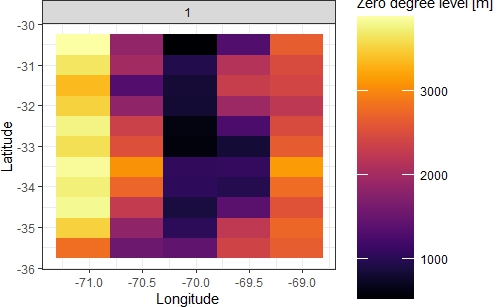Dear community,
I am trying to calculate the zero-degree isotherm (altitude in which temperature is at 0 degrees) in meters above sea level. I used ERA5 data by ECMWF for this and I noticed that the values decrease rapidly towards mountainous areas (see black areas in figure below), which is why I assume that the data is not in meters above sea level but in meters above the earth’s surface.
Unfortunately, the provided ECMWF documentation is a bit confusing, as they say, that ERA5 data is referenced to the EGM96 geoid (meters above sea level) in the vertical (https://confluence.ecmwf.int/display/CKB/ERA5%3A+data+documentation#heading-Spatialreferencesystems). However, if this was the case the values for the zero degree level shouldn’t decrease in mountainous areas, whereas it makes sense that they decrease if the unit is meters above the earth’s surface.
I want to compare the data on zero degree level with other data on glaciers that is based on the SRTM30-DEM (which is also referenced to the EGM96 geoid/mean sea level in the vertical). ECMWF provides data on geopotential which I converted to surface geopotential height in meters. By doing so I essentially obtained a DEM also made from SRTM30 data (as ERA5 uses a combination of SRTM30 data and other surface elevation datasets: https://confluence.ecmwf.int/display/CKB/ERA5%3A+data+documentation#heading-SurfaceelevationdatasetsusedbyERA5).
Am I right in assuming that I have to add the surface geopotential height in meters to the data on zero degree level to have the same unit as the DEM that my glacier data is based on?
Thanks in advance,
Philipp
